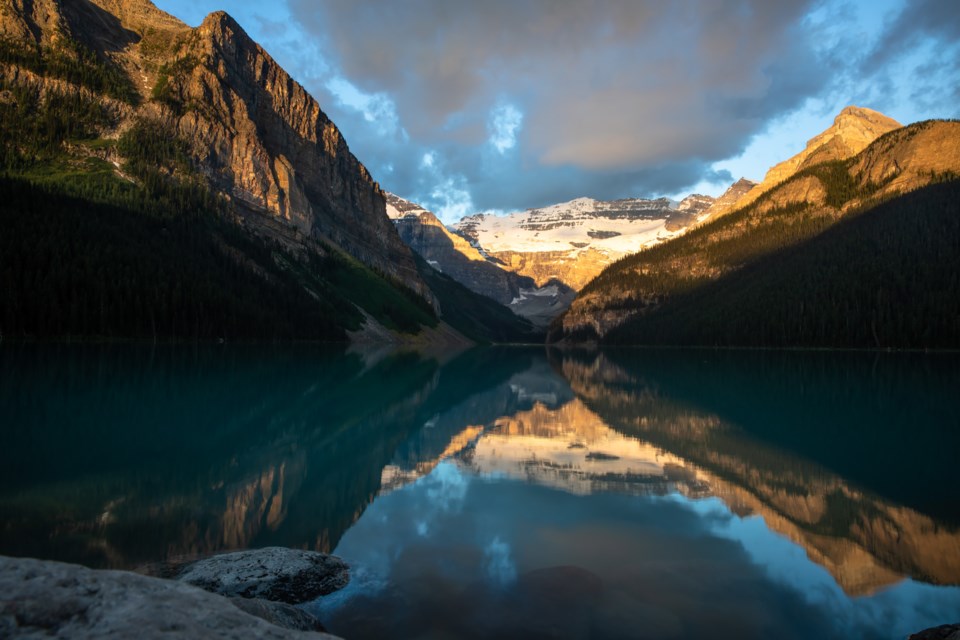BANFF – Visitors are dumping trash and violating parking rules in Banff National Park like never before.
The ongoing concerning behaviour has prompted Parks Canada to remind visitors of the rules, which are in in place to keep wildlife and people safe and help others enjoy their park experience, ahead of what is expected to be a busy Labour Day long weekend on Sept. 5-7.
Daniella Rubeling, visitor experience manager for Banff National Park, said she wonders if the increase in garbage is because people are hesitant to touch bear-proof bins during the COVID-19 pandemic.
“From our perspective, that’s not an acceptable reason not to use bear-proof bins and dispose of garbage in a less appropriate manner like on trails, on the ground or in vault toilets,” she said.
“We want to remind people that if they’re not comfortable using the bins because they’re trying to limit common touch surfaces, bring their own bags and pack their own garbage out.”
While she is not aware of a specific incident of bears or wolves getting into discarded garbage or food, Rubeling said the potential is always there.
“We want to remind people to help us keep wildlife safe,” she said. “We don’t want to get them food-conditioned.”
Rubeling said Parks Canada is doing its best to educate people about the importance of keeping day-use areas clean, noting there is a strong focus and staff presence at busier areas such as Cascade Ponds, for example.
“Anecdotally, it definitely seems that this is a bigger issue this year that we’re dealing with,” she said.
On top of this problem, the high visitation to Banff National Park is causing parking chaos at many of the park’s hotspots, such as Lake Louise, Moraine Lake, Lake Minnewanka, Two Jack Lake and Cascade Ponds.
Banff National Park attracts more than four million visitors a year, and despite COVID-19 and no international travellers, the park has been extremely busy. Most are regional travellers arriving in personal vehicles.
“Even though we’re not having international visitation this year, our places are still seeing a lot of visitation, especially on weekends,” Rubeling said.
“Those parking lots fill up quickly and we’re seeing more roadside parking, which not only is illegal, but it’s unsafe and creates a hazard for other visitors, our enforcement folks as well as access for emergency response teams.”
Rubeling said Parks has had staff at parking lots to manage parking.
While the focus has been on education, she said law enforcement wardens are issuing tickets for illegal parking.
“Our wardens are issuing tickets, especially where it presents a hazard for emergency vehicle access, other vehicles and visitors,” she said. “The focus is on safety.”
Rubeling said it’s important visitors plan ahead and have back-up options if the day-use area parking lot is full.
In addition, said the BanffNow parking app is a great tool for visitors.
“If the parking lot you get to is full, you can check that and be able to see alternative places,” she said.
“As these places are filling up, it’s good to have some back-up options and be more flexible with plans for the day.”
Environmentalists praised Parks Canada for its visitor education campaign and hard work this summer, but say the problems around garbage and parking speak to a bigger issue – the need for a park-wide human-use management strategy.
The Canadian Parks and Wilderness Society (CPAWS) points to congestion, declining visitor satisfaction, development pressures to address the sheer volume of people and increased risk of human-wildlife conflict as some problems and challenges with high visitation.
“The whole COVID situation is presenting park agencies with opportunities to consider and implement more integrated planning,” said Sarah Elmeligi, who works as a consultant CPAWS on national park issues,. “How do we incorporate conservation and protection with quality visitor experiences?”
With high visitation continuing even during the COVID-19 pandemic, Elmeligi said there needs to be a paradigm shift in how people expect to enter and use the mountain national parks.
“We can’t build parking lots big enough to accommodate all the vehicles,” she said, noting a transportation system alone is a not an answer to the problem.
“There may be trails or facilities that are also not built to handle the thousands of people who will get off a shuttle bus on Saturday,” she added.
An overarching strategy not only considers transportation, but also can mean limits, temporary closures to protect wildlife, reservation systems and quotas among other strategies.
“For example, it considers how many people can a trail, beach or picnic area support that allows for a positive visitor experience within ecological and social carrying capacities,” Elmeligi said.
Read more from RMOToday.com



